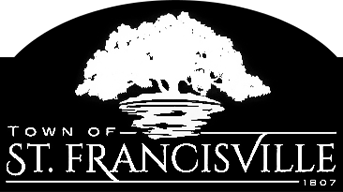The port city of Bayou Sara was established in the late 1790s right on the banks of the Mississippi River. Center of commerce for the surrounding plantation country, with a mile of warehouses to store cotton plus extensive residential and commercial sections, Bayou Sara was one of the 19th century’s most important river ports. However, as ice and snow melted upriver year after year, raging torrents of water raced downstream and through crevasses in flimsy levees to destroy everything in its path, including Bayou Sara. The flood of 1912 was the most devastating, with rising waters sending residents rushing into the hills as large cracks appeared in the levee.
Of Bayou Sara’s 630 residents in 1910, only 234 remained in 1920. The town was unincorporated in 1926, and the flood of 1927 effectively destroyed what remained of the community. Yet over 20 families, plus some houses and small businesses, persisted at least until the flood of 1937. These families then retreated to the bluffs when 9 feet of water submerged the town. Few of them returned. In 1939, the Bethel AME Church finally moved up the bluff to today’s LA Highway 10. Once abandoned, the Bayou Sara area gradually returned to backswamp.
Read more about the history here.




